Charlotte’s population grew during World War I when the United States government established Camp Greene north of Wilkinson Boulevard. Following the war, many veterans and suppliers remained in Charlotte. In 1918, the textile industry in nearby Gastonia and Kannapolis facilitated significant growth. The American textile industry began in New England, but Charlotte got ahead in the 1920s.
One of the city’s oldest neighborhoods was still under construction during the 1920s. Construction on Myers Park began in 1911 and continued until 1918. Duke Mansion, one of the area’s most famous residences, was initially built in 1890 by James B. Duke (the man who brought hydroelectricity to the South), who subsequently expanded it. Along with providing cheap electric power, Duke endowment also funded several of the state’s most prestigious institutions, including Duke University, Davidson College, Johnson C. Smith University, and several hospitals and churches.)
Below are some stunning historical photos that show what Charlotte looked like in the 1910s. Also, check Charlotte in the 1900s.
#1 Van Every building from the quad, 1910s
#2 Selwyn Hotel, 1912
#3 Mecklenburg Auto Company, 1911
#4 Charlotte Firemen with Colonel Thomas LeRoy Kirkpatrick, who was Charlotte’s Mayor, 1916
#5 Belk Brothers Department Store, 1911
#6 A Company Street at Camp Greene, 1918
#7 Trade Street (East), 1915
#8 United States Post Office in Charlotte, 1910
#9 Early development of Myers Park, 1912
#10 Courthouse and law building, 1911
#11 Anna Morrison Jackson Second House, 1911
#12 Charlotte City Life, 1910
#13 Residence in Myers Park shortly after construction, 1916
#14 Typical example of Classical Revival architecture that is found in Myers Park, 1916
#15 Driver and mechanic pose in their car in front of the Charlotte Observer offices on South Church Street, 1919
#16 Mecklenburg Auto Company, 1911
#17 Mecklenburg Auto Company, 1911
#18 Charlotte University Students, 1911

Charlotte University School was located at Sixth and North Tryon Streets. This is a school portrait of the class of 1911. Featured are Professor H.W. Glasgow, George Wearn, U, ___ McCloud, Frank Dowd, Eli Todd McNinch, Pete Crayton, Joe Mason, Graham Hunter, Pelhorn Stockton, Steve Miller, Archie Wakefield, John Berryhill, Thorne Ranson, Harry Weeks, ___ Howard, Joe Crayton, Todd Misenheimer, Neil Overman, James H. Carson, H.F. Buchanan, Tom Taliaferro, Randolph Seaver, Hamilton Anthony, Frank Patterson, Robert Cochrane, Carol King, Steve Davis, Francis Clarkson ( later became Judge), Charles Guthrie, Norman Young, Courtney Overman, Jesse Shoemaker, Robert Torrance.
#19 Presbyterian College, 1911
#20 Charlotte Sanatorium, 1912
#21 Camp Greene Trenches, 1918
#22 Camp Greene Mess Hall.1918
#23 Boxing at Camp Greene, 1918
#24 First Presbyterian Church, 1910

Located at Trade and Church Streets, First Presbyterian Church is the site of one of the first churches built in the city of Charlotte. The original church was completed in 1923. The current church was built in 1895. It became know as First Presbyterian Church in 1873 with the organization of Second Presbyterian Church.
#25 Charlotte Country Club Grounds, 1913
#26 Charlotte Country Club, 1917

Charlotte Country Club began as The Mecklenburg Club in 1910. This first Club was located west of the city adjoining a pond on or near Stewart Creek. The activities of this early Club were confined to card games, picnics, boating, and fishing. The name was changed to Charlotte Country Club in 1917. The club moved to its present location in the Plaza Midwood neighborhood in 1931.
#27 Camp Greene YMCA Building, 1918
#28 North Graded School, 1913
#29 Camp Greene Soldiers on Drill Field, 1917
#30 Soldiers from Camp Greene washing their uniforms, 1917
#31 Aerial view of Charlotte, 1911
#32 St. Peter’s Episcopal Church, 1910
#33 Camp Greene Soldiers Near Tents, 1918
#34 Aerial view of Camp Greene, 1918
#35 Barber Shop at Camp Greene, 1918
#36 Drilling Recruits at Camp Greene, 1918
#37 Soldiers doing kitchen duties at Camp Greene, 1919
#38 Camp Greene Regimental Street, 1918
#39 Dowd House at Camp Greene, 1918

Built in 1879, this historic home was once at the center of a 250-acre farm. It was the childhood home of Willis Frank Dowd, founder of Charlotte Pipe and Foundry, and William Carey Dowd, former publisher of The Charlotte News. During the first World War, the Dowd House was used as the Headquaters for Camp Greene Army Training Base during World War I ( 1917-1919 ). Located at 2216 Monument Street, is the the oldest structure in West Charlotte and a museum. It is the only structure that is left from when the area was an Army Training Camp. The museum is located 1-1/2 miles from Uptown Charlotte.
#40 Company Mess Hall at Camp Greene, 1918
#41 Camp Greene Inspection of Troops, 1917
#42 Myers Park, 1912
#43 Myers Park Laying Streetcar Tracks, 1912
#44 Mayor Thomas LeRoy Kirkpatrick and North Carolina Governor Locke Craig, 1916
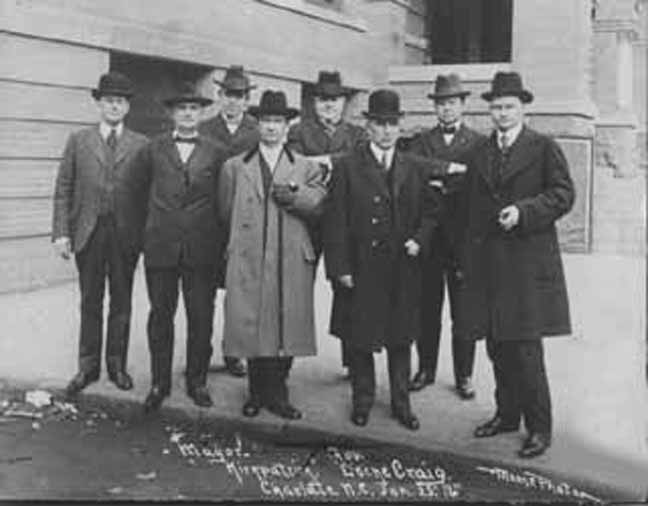
Charlotte Mayor T.L. Kirkpatrick (1877-1946) with North Carolina Governor Locke Craig (1860-1924) posed for this photograph on January 25, 1916. From left to right: Thomas L. Black (1863-1934), Justice Heriot Clarkson (1863-1942), Edmund Randolph Preston (1880-1957), Mayor Kirkpatrick, Dr. John Q. Myers (1877-1944), Governor Craig, Captain John A. Parker and Paul Cameron Whitlock (1878-1959).
#45 Society of the Cincinnat, 1918

NC State Society of the Cincinnati convened in Charlotte at the Southern Manufacturer's Club on April 15, 1916. Sitting: Commodore W.S. Hogg, USN, Washington, DC: Brig. General Charles L. Davis, USA, Schenectady, NY: Rt. Rev. Joseph Blount Cheshire, Raleigh, Hon. Wilson G. Lamb. Pres. of the Society: Maj. Wm. A. Smith Ansonville, Dr. S. Westray Battle, USN retired, Asheville: Colonel Benehan Cameron, Stagville,: F. Brevard McDowell, Charlotte: Standing: Heriot Clarkson, Charlotte: DeLancey Haywood, Raleigh: B.D. Nelme, Ansonville: Walter W. Watt, Charlotte: James Alson Cabell, Columbia, Va.: W. Hall Harris, Baltimore, MD: Wm. E. Bush, Baltimore, MD: W.D. Carstarphen, Plymouth, MA: John Bradley Lord, Brooklyn, NY: Dr. Nelson Ferebee, USN, Oxford, NC.
#46 Captain William Myers House, 1910
#47 Charlotte Fire Fighters, 1916
#48 Class at Elizabeth School around 1918. The school was located on East 5th Street.
#49 Crowell’s Garage, 1912
#50 Tryon Street (North), 1910
#51 Loose-Wiles Biscuit Company, 1915
#52 Street Railroad Car No.42 at the intersection of Trade and Tryon Streets, 1915
#53 College Street School Students (7th Grade), 1915
#54 Charlotte Firemen, 1916
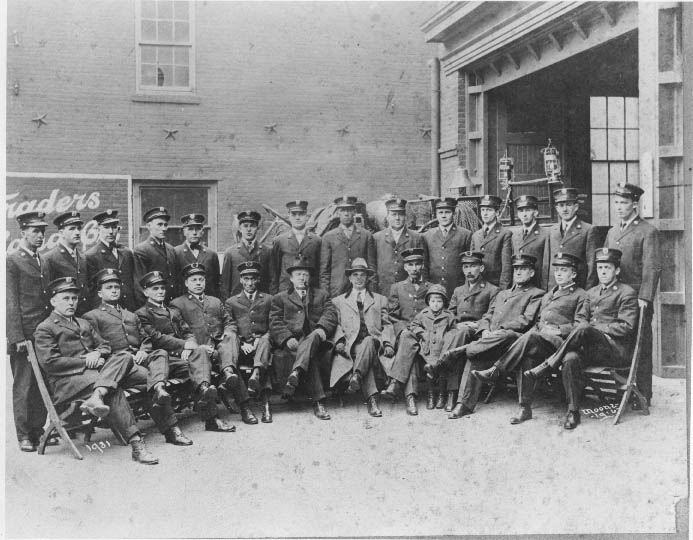
Charlotte Firemen pose for a photograph in front of the Fifth Street Firehouse which was behind the City Hall on North Tryon Street. In the center is J. A. Jones (the gentleman in the dark coat) was a local contractor and a fire commissioner. The man in the light coat is Mayor Frank McNinch.
#55 Charlotte Branch of the United States Mint, 1912
#56 The Southern Manufacturer’s Club was a men’s club located on Trade Street, 1910
#57 Brockman’s Bookstore, 1916
#58 Southern Cotton Oil Company, 1910
#59 Crowell’s Garage, 1913
#60 Trust Building, 1910
#61 Elizabeth College, 1910
#62 Myers Park Development, 1911

Wagons hauling materials to the Myers Park construction site. Myers Park is one of Charlotte's oldest neighborhoods. George Stephens played an instrumental role in the development of Myers Park in the early part of the twentieth century. The land was owned by Stephens's father-in-law, J.S. Myers. Originally a suburb of Charlotte, the area quickly became the site of beautiful examples of American architecture. Landscape architect John Nolen and his assistant Earle Draper designed the curving, tree-lined streets. This collection shows the area under construction, as well as the planting of full-grown trees.
#63 Landscaping at Myers Park, 1915
#64 Road construction in Myers Park.1911
#65 Construction in Myers Park, 1911
#66 Unknown Residence in Myers Park, 1916
#67 House under construction in Myers Park, 1916
#68 Four completed residence in Myers Park, 1916
#69 Taylor/Duke Mansion, 1911
#70 Entrance gate to Myers Park, 1912
#71 Presbyterian College, 1910
#72 Elizabeth College, 1910
#73 Red Circle Soldiers Club for Black Troops in Charlotte, 1918

Photo from an outside street view of the Red Circle Club in Charlotte, North Carolina. The Red Circle Club was a place for black soldiers to congregate and relax away from Camp Greene, a World War I Cantonment Camp near Charlotte. Photo features three African American men, two soldiers and a civilian, standing in front of the club.
#74 YWCA Hostess House at Camp Greene, 1918
#75 Elizabeth Avenue Neighborhood, 1918
#76 Lakewood Station & Pavilion, 1912

The Lakewood Station & Pavilion opened in July of 1909. Built by the Four C's, the park expanded overtime to include a rollercoaster, a merry-go-round and other amusement rides as well as exotic animals and a vast garden. Located in West Charlotte, visitors could take a trolley to the park to enjoy a boat ride on the lake or a dance in the pavilion. During the Great Depression, the park fell into disrepair and a flood caused the dam to burst and the lake disappeared. The rest of buildings were eventually demolished.
#77 Lakewood Pavilion and Boaters, 1916

The Lakewood Pavilion opened in July of 1909. Built by the Four C's, the park expanded overtime to include a rollercoaster, a merry-go-round and other amusement rides as well as exotic animals and a vast garden. Located in West Charlotte, visitors could take a trolley to the park to enjoy a boat ride on the lake or a dance in the pavilion. During the Great Depression, the park fell into disrepair and a flood caused the dam to burst and the lake disappeared. The rest of buildings were eventually demolished.
#78 Latta Park Baseball Field, 1911

Baseball was the sport in Charlotte as well as the United States at the beginning of the 1900s. In Dilworth, there were at least three ball fields. In 1902 the 4 C's granted a 10-year lease for the fairgrounds and the baseball field seen here. Located on the far end of East Boulevard, maps suggest home plate was east of Lennox Avenue. The Park probably extended from near East Boulevard to Lennox Avenue.




















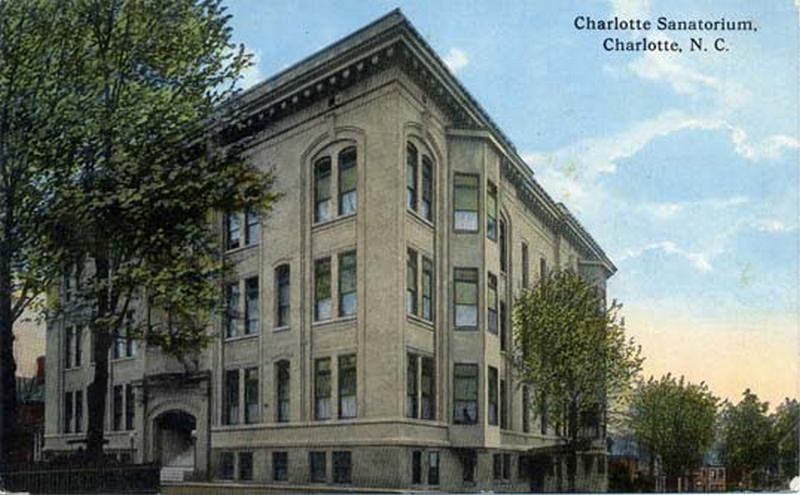

















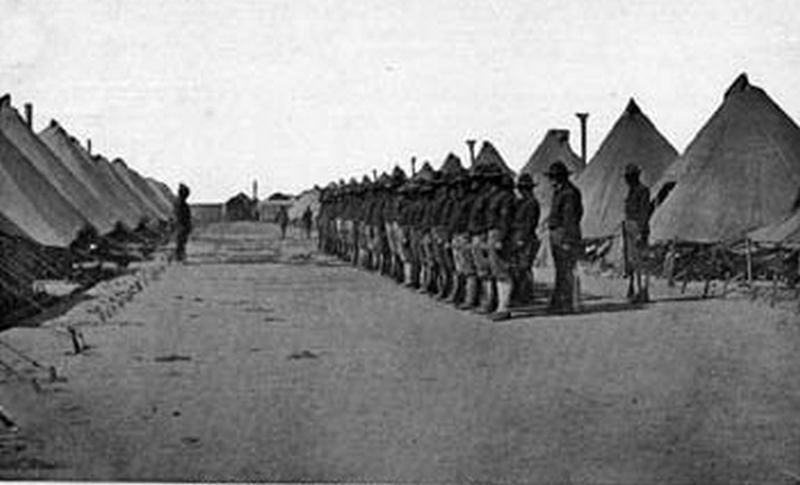




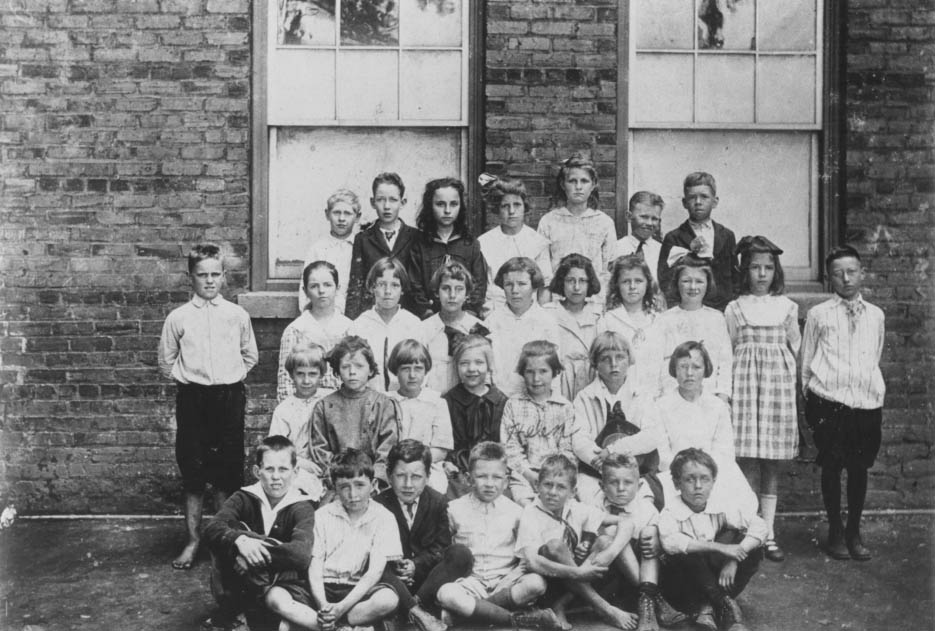





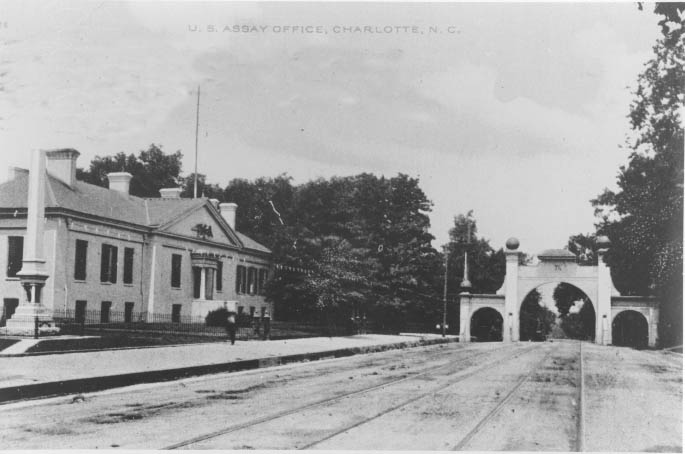
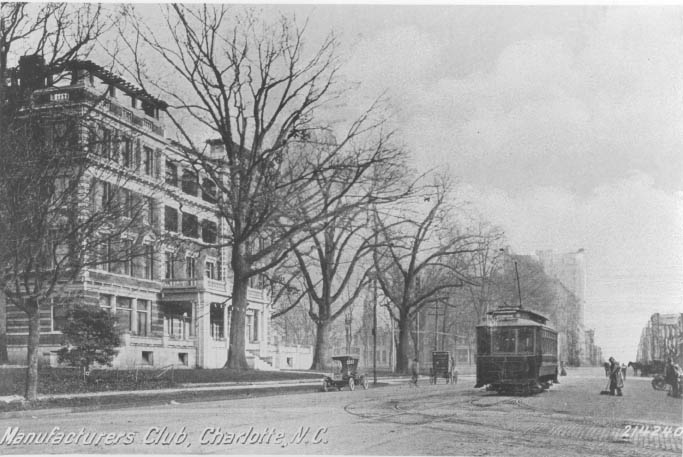



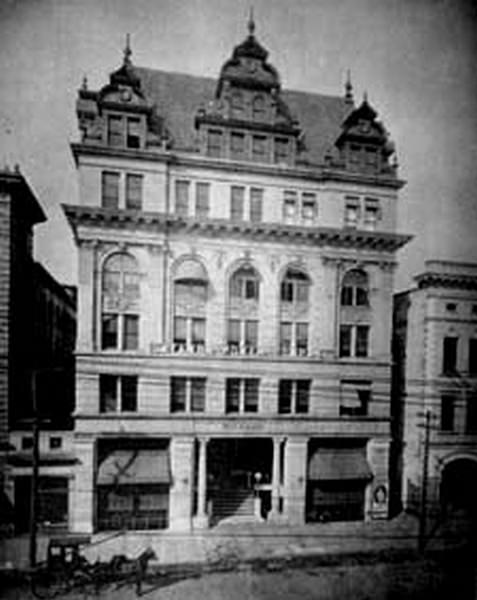










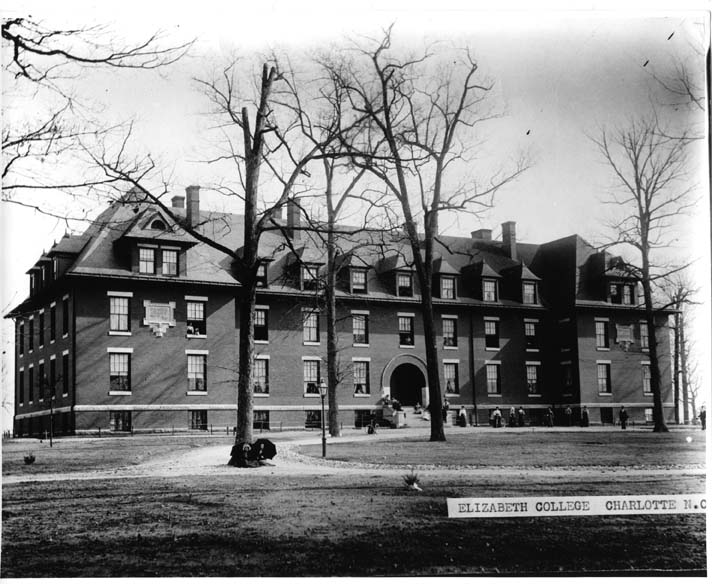

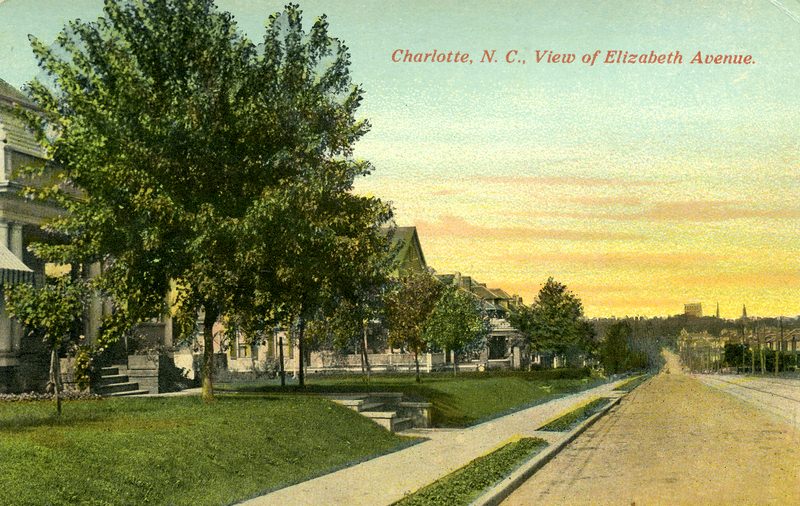

Amazing photos thanks for sharing! I’m a Charlotte Native and have always been very interested in local history, I haven’t seen a lot of these.
I’d give anything to be able to travel back in time and drive around Charlotte.
Some cool photos, no doubt, but some of the dates are completely mislabeled.
Some cool photos, no doubt, but some of the dates are completely mislabeled. Like the one showing a sign for CPCC (which wasn’t founded until 1963) or the Van Every Building, which looks way too modern for the 1910s.